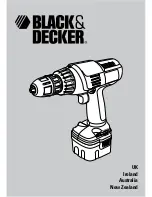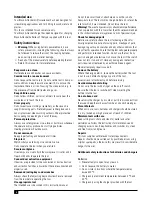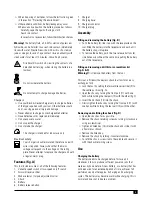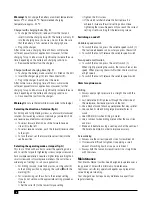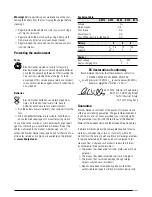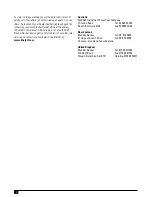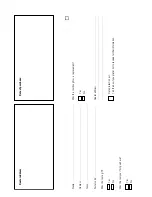
6
Warning!
Do not charge the battery at ambient temperatures
below 4
°
C or above 40
°
C. Recommended charging
temperature: approx. 24
°
C.
Charger with charging base (fig. E)
◆
To charge the battery (5), remove it from the tool and
insert it into the charging base (8). The battery will only fit
into the charging base in one way. Do not force. Be sure
that the battery is fully seated in the charging base.
◆
Plug in the charger.
After normal use, a charging time of 3 hours will provide
sufficient power for most applications. However, further
charging for up to 6 hours could significantly increase the use
time, depending on the battery and charging conditions.
◆
Remove the battery from the charger.
Charger without charging base (fig. F)
◆
To charge the battery, make sure that it is fitted on the drill.
◆
Insert the charger plug (10) into the connector (9).
◆
Plug in the charger. Switch on at the mains.
After normal use, a charging time of 3 hours will provide
sufficient power for most applications. However, further
charging for up to 6 hours could significantly increase the use
time, depending on the battery and charging conditions.
◆
Disconnect the tool from the charger.
Warning!
Do not use the tool while it is connected to the charger.
Selecting the direction of rotation (fig. A)
For drilling and for tightening screws, use forward (clockwise)
rotation. For loosening screws or removing a jammed drill bit,
use reverse (counterclockwise) rotation.
◆
To select forward rotation, push the forward/reverse
slider (2) to the left.
◆
To select reverse rotation, push the forward/reverse slider
to the right.
◆
To lock the tool, set the forward/reverse slider into the
centre position.
Selecting the operating mode or torque (fig. G)
This tool is fitted with a collar to select the operating mode
and to set the torque for tightening screws. Large screws and
hard workpiece materials require a higher torque setting than
small screws and soft workpiece materials. The collar has a
wide range of settings to suit your application.
◆
For drilling in wood, metal and plastics, set the collar (3)
to the drilling position by aligning the symbol with the
marking (15).
◆
For screwdriving, set the collar to the desired setting.
If you do not yet know the appropriate setting, proceed as
follows:
◆
Set the collar (3) to the lowest torque setting.
◆
Tighten the first screw.
◆
If the clutch ratchets before the desired result is
achieved, increase the collar setting and continue
tightening the screw. Repeat until you reach the correct
setting. Use this setting for the remaining screws.
Switching on and off
Variable speed switch
◆
To switch the tool on, press the variable speed switch (1).
The tool speed depends on how far you press the switch.
◆
To switch the tool off, release the variable speed switch.
Two-speed on/off switch
◆
To switch the tool on, press the on/off switch (1).
When slightly pressing the switch, the tool will run at low
speed. When pressing the switch further, the tool will run
at high speed.
◆
To switch the tool off, release the variable speed switch.
Hints for optimum use
Drilling
◆
Always apply a light pressure in a straight line with the
drill bit.
◆
Just before the drill tip breaks through the other side of
the workpiece, decrease pressure on the tool.
◆
Use a block of wood to back up workpieces that may splinter.
◆
Use spade bits when drilling large diameter holes in
wood.
◆
Use HSS drill bits when drilling in metal.
◆
Use a lubricant when drilling metals other than cast iron
and brass.
◆
Make an indentation using a centre punch at the centre of
the hole to be drilled in order to improve accuracy.
Screwdriving
◆
Always use the correct type and size of screwdriver bit.
◆
If screws are difficult to tighten, try applying a small
amount of washing liquid or soap as a lubricant.
◆
Always hold the tool and screwdriver bit in a straight line
with the screw.
Maintenance
Your Black & Decker tool has been designed to operate over a
long period of time with a minimum of maintenance.
Continuous satisfactory operation depends upon proper tool
care and regular cleaning.
Your charger does not require any maintenance apart from
regular cleaning.
Summary of Contents for KC 12 Series
Page 1: ...1 UK Ireland Australia New Zealand ...
Page 2: ...2 6 2 1 5 4 3 7 10 8 7 9 A ...
Page 3: ...3 B C D E F G 5 6 11 13 12 14 5 8 9 10 7 15 3 ...
Page 9: ...9 ...
Page 10: ...10 ...

